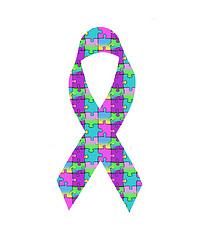Autism: Sensations last too long
A very interesting phenomenon in autism is, sensation lasts too long.
Non-autistics ‘forget’ the sensation very quickly. For example, when you get dressed in the morning you can feel your clothes on your skin, but soon the feeling fades. This fading sensation is called habituation. It is the same with smell and taste, or any other sense. If the senses are exposed to a continuing stimulus, habituation soon occurs. When the stimulus changes, the feeling returns. That is why you don’t feel the clothes you are wearing and become aware of them only if you change or adjust them. For many autistic individuals, however, the habituation process doesn’t work properly and the sensation lasts too long. For some, it takes a few days to stop feeling their clothes on the body. And unfortunately, when this comfortable feeling (or ‘no-feeling’) has been achieved it is time to wear clean ones, so the process of getting used to the sensation starts again. The most difficult times are when they have to change from winter clothes to summer ones and the other way round. It takes weeks to get used to wearing shorts and short-sleeved tops. But the time they feel comfortable enough to expose the skin, it’s autumn and time to start wearing trousers and long-sleeved jumpers again.
Another (quite common) problem caused by their difficulty to stop feeling sensation is when their nails are being cut. For instance, Alex (an autistic boy) hates it as the process of ‘cutting’ doesn’t stop when his mother puts the scissors away. It’s not that the feeling of nails being cut remains, but rather that the surface of the cut nail is broader and makes it feel like the air is ‘pressing on’ the nails. The boy keeps feeling the sensation for at least three to four days. He tries to describe how it feels, but because of his differences in using the language, the best he comes up with is, ‘My nails are sticky.’ He feels better on the fifth or sixth day after the ‘traumatic event’. But the comfortable existence lasts only two more days when it’s time to have his nails clipped again.
The explanation of this phenomenon can be found in the research of Prof. Casanova. His comparative studies of minicolumns in the brains of non-autistic and autistic individuals reveal that in non-autistic brains information is transmitted through the core of the minicolumn and is prevented from activating neighboring units by surrounding inhibitory fibres. In autism, because minicolumns are so small and their number is so big, stimuli are no longer contained within them but rather overflow to adjacent units thus creating an amplifier effect. Inhibitory fibres just do not cope with this flow. To illustrate this phenomenon, Prof. Casanova compares inhibitory filters with shower curtain. When working properly and fully covering the bathtub, the shower curtain prevents water from spilling to the floor. In autism, ‘water is all over the bathroom’.
References
Casanova, M. (2006) ‘Brains of the autistic individuals.’ International AWARE On-Line Conference Papers.
Written by Dr. Olga Bogdashina on behalf of Integrated Treatment Services










